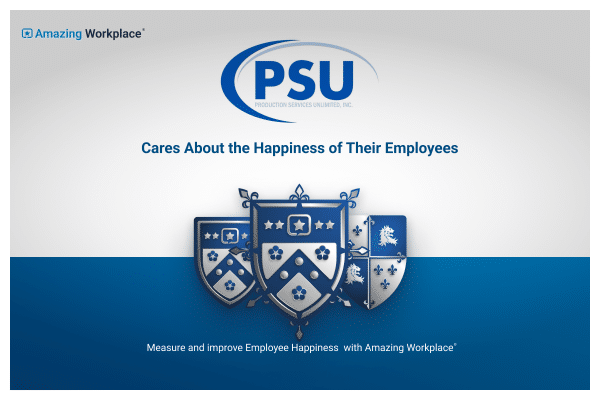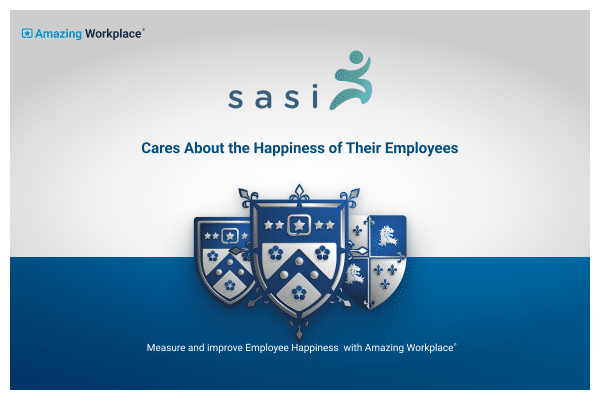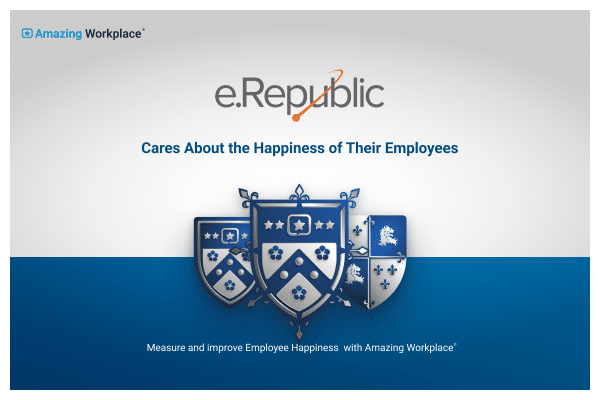How to Improve Your Company Culture
With a better company culture, you can create a more productive and happier workplace.

A company is nothing without its employees.
With a better company culture, you can create a more productive and happier workplace.
If you’ve ever wondered why workplace culture is essential to retaining employees, here’s your answer. Nine out of ten people will decide if they want to stay at a company within their first six months.
A positive, robust company culture keeps employees happy and fulfilled. But with so many companies implementing remote work, it can be hard to establish a sense of belonging and togetherness among employees.
If you’re not sure how to improve company culture, you’re in the right place. This guide covers 10 effective ways to transform company culture for more happy, motivated, and productive employees.
Why Does Company Culture Matter?
A better culture directly translates to happier employees. Happy, positive employees are natural morale boosters and exceptional team players.
But, that’s not all. Studies show happier workers are 12% more productive. An emotionally healthy workplace motivates employees to work hard and have fun while doing so.
On the contrary, sad or unhappy workers are more likely to quit in search of a better opportunity. When the work environment feels unhealthy or overly stressful, it affects employee retention. Then, the company is put under more stress brought on by additional efforts to interview, hire, and train candidates.
And, according to Harvard Business Review, happy employees are more creative. When employees feel safe and comfortable at work, they’re able to think about problems in new creative ways. They’re inspired to think more freely, which makes them better problem solvers and a great asset to any business.
If you’re in a line of work where you consistently deal with clients or customers, you’ll want an abundance of happy, positive workers. Why? Happy workers are more friendly and attentive to clients, and also provide a higher quality of service.
This reflects positively on your business and encourages brand loyalty. On the flip side of that equation, when customers have three or fewer negative experiences with customer service, they’re more likely to ghost a business or never use them again. Needless to say, you don’t want sad employees dealing with customers.
How to Measure Employee Happiness
Now that you know how crucial employee happiness is to the ecosystem of a business, it’s helpful to understand how to measure worker satisfaction. You can use a variety of resources and tools to gauge how happy your workers are.
Smart Survey technology can give you the pulse on how employees are feeling. This survey technology identifies exact actions that an organization can take to create and maintain a workplace that their professionals agree is amazing.
Surveys can be sent around quarterly, annually, or after the announcement of a new project or business endeavor to measure how employees are feeling over time. The anonymous aspect also helps employees feel safe to express their thoughts and feelings without fearing any repercussions.
Feedback platforms are also useful because they allow employees to input feedback regularly. These platforms are also great for setting up an open dialogue between employees and their managers or bosses.
Regularly scheduled one-on-ones, or meetings between employee and their manager, are another way to gauge satisfaction. These meetings allow employees to feel more connected with their leaders and touch base on any ongoing or immediate issues. One-on-ones also help build rapport, so that if any unhappiness does arise, there’s a space for employees to address it with their superiors.
How to Improve Company Culture: 10 Ways to Keep Employees Happy
Here are 10 effective ways to improve company culture and employee happiness. You might already be doing a number of these strategies, but hopefully, you also get some ideas on new ways to boost company culture.
1). Establish Leadership Communication
Leaders set the standard for the rest of the company. The more transparent, honest, and open leaders are, the more emotionally safe and happy employees will feel. When leaders are transparent about the “why” behind certain initiatives or recent changes in the company, employees are more likely to trust the company and buy into the business’s values. Employees will also feel more aligned to the company’s mission because they’ll have plenty of communication from leadership to understand the ins and outs of the business.
It’s a good idea to set up a monthly or bimonthly business review where leaders talk through projects and goals and ask for feedback and questions from workers. This serves as an open forum for employees and an opportunity for leaders to connect with workers in a way they usually might not have the chance to.
2). Advocate for a Work-Life Balance
Employees don’t want to feel like their job is their entire world. By prioritizing a healthy balance between work and their life outside of work, employees can return to their job each day feeling energized and restored. Creating flexible schedules, like offering remote work or a hybrid option where employees can come into the office a few days out of the week and work from home the rest, forms a flexible workplace. It’s also important to give employees ample vacation time, which allows them to recharge.
3). Introduce Work Variety
No one likes to do one single task day in and day out. By offering employees a variety of work, you can make it clear why their role in the company matters. If an employee has been stuck on a project for weeks or months on end, a change of pace is much needed and sparks employee happiness.
4). Build Relationships
At work, your relationships mean everything. No one wants to dread coming to work because of a rude coworker or awkward interactions. Foster positive at-work relationships by hosting team-building activities can company events. Give workers a chance to relax and have fun together, and those positive associations will translate to the workday.
5). Encourage Communication and Collaboration
Employees feel most connected when they’re familiar with the company as a whole, not just the people on their immediate team. Encourage open communication across departments and opportunities for cross-team collaboration. Not only will workers be able to solve problems quicker, but they’ll also interact with others that they otherwise wouldn’t connect with daily.
6). Invest in Career Development
The happiest employees are those who feel like their company invests in their career as a whole. Provide room for plenty of upward mobility in the company. If an employee feels like they’re at a dead end with their current role, they aren’t likely to feel motivated to work toward new goals. Also, create a space for career development. Allow workers to take courses or complete training in relevant areas that can strengthen their role at work and help further their careers.
7). Build a Positive Work Environment
The more positive and lively the atmosphere is at work, the more excited employees will feel to show up and do their job every day. Create a work environment that prioritizes listening and building employees up. Some examples of this include always saying thank you, lending a listening ear if an employee is experiencing an issue inside or outside of work, and making time for positive engagement company-wide (like a weekly happy hour).
8). Make Health and Wellness a Priority
Healthy employees are more likely to be happy employees. Make it clear to workers that the company values their well-being as a whole by including health benefits (dental and medical insurance plans for example) in their compensation package.
9). Celebrate Wins
When a team accomplishes a project or hits a goal—celebrate it! Recognize and reward employees frequently. This is a great morale boost for not only the team or employees but the company as a whole. Employees who feel appreciated and valued at work are not only happier but more likely to continue crushing goals and working hard.
10). Provide Unique Benefits
Provide employee perks that go beyond the typical benefits of health, dental, and vision coverage. This could be a monthly wellness stipend where the company covers things like yoga classes, gym memberships, or massages. Or, give employees paid time off to volunteer or engage in philanthropy. This is a great way to show workers you care. Plus, if you offer unique benefits it makes employees less likely to leave.
A positive, collaborative, and open company creates positive, collaborative, and open employees. If you’d like to get started on learning how to improve company culture, contact Amazing Workplace today. Amazing Workplace identifies ways to make your company’s culture exceptional by utilizing tools like surveys. Then, they execute exact actions to make it happen.
Watch your company’s culture go from good to great to amazing with Amazing Workplace today!


